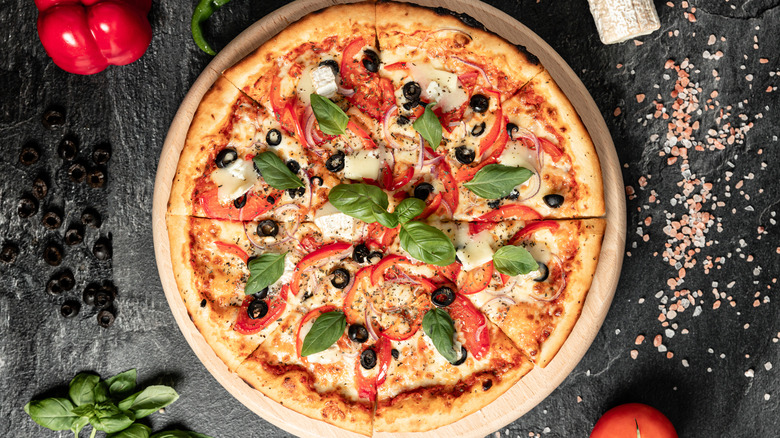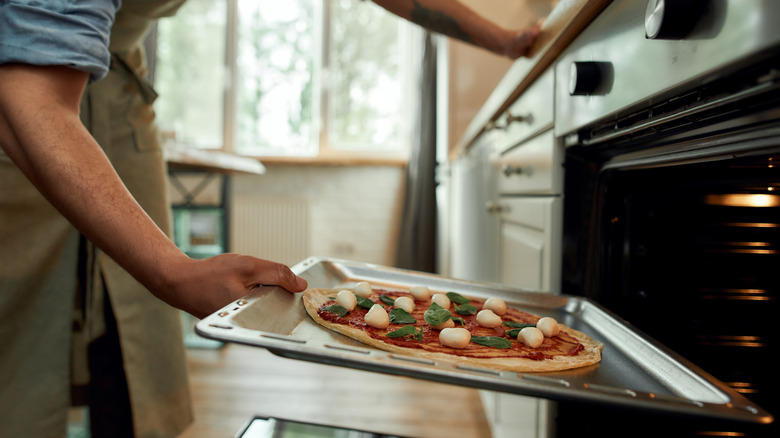Why The Position Of Your Oven Rack Matters For Pizza
At its core, pizza is simple. Dough meets sauce, cheese, a few toppings, the heat from an oven, and voilà: A culinary masterpiece is born. But how can such simplicity pack an immense amount of heightened flavors? Inverse explains that there are many reasons for this, and one of the primary ones has to do with glutamate in the cheese and tomatoes (and other ingredients), which causes salivation and cravings for even more pizza. Caramelization processes, as well as the Maillard reaction, also take place within the baking of pizza, which makes the whole thing golden-brown and ultra-tasty.
And luckily, you don't need to order such doughy delights at a restaurant to replicate these same flavor compounds because homemade pizza is easy, fun, and creative for just about anyone. But when it comes time to place the pizza in the oven, it's important to adjust your oven rack to the proper position. Here's why it will affect the outcome of your pizza.
The lower, the better
Whether you're making a Detroit-style pizza or a traditional Neapolitan, be sure to go low with your oven rack and move it toward the bottom of your oven. Here's why: According to Serious Eats, heat radiates from the base of the oven, which makes the underside of the dough super crispy and golden-brown.
Joy the Baker explains a bit about oven rack positions and how they affect food. Casseroles and pies, for instance, benefit from the top portion of the oven because of how the hot air climbs to the top, which makes toppings super crusty and browned. The middle rack was practically made for cookies and cakes because the bottom and top of such foods won't brown so fast since the heat is more leveled. And as previously mentioned, the bottom part of the oven has more intense heat, which also makes it a suitable option for flatbreads, per Real Simple.
The latter source also mentions that if you love oozing cheese that pulls away when you grab a slice, be sure to place the pizza on the top rack (after it's already cooked) and set the oven to the broil setting. But keep a close eye on it because the pizza can go from broiled to burnt very quickly. So next time you make a homemade or frozen pizza, be sure to utilize the bottom portion of your oven to make the dough crispy, browned, and flavorful.

